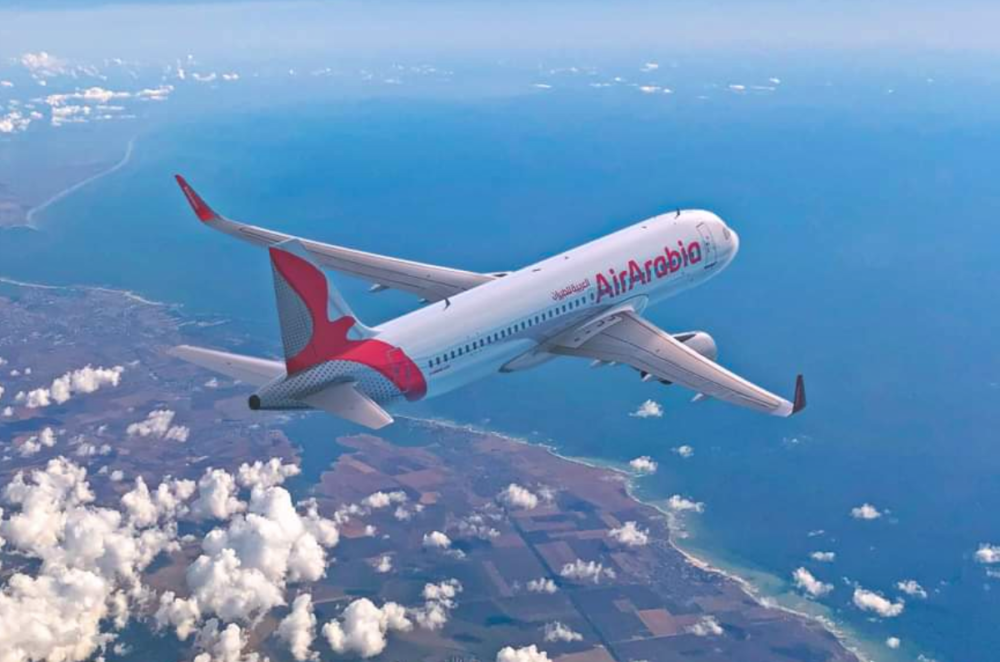Overshadowed by higher-profile airlines in the region, Air Arabia Abu Dhabi is shaping up as a Gulf airline success story. A joint venture between Air Arabia and Etihad Airways, the low-cost airline is already exceeding expectations at Etihad.

Despite the pandemic, Air Arabia Abu Dhabi is performing well
Air Arabia Abu Dhabi only began flying out of its Abu Dhabi International Airport base in July 2020. Operating flights with three Airbus A320-200s, the airline is tapping into the burgeoning demand for low-cost flights around the Gulf region.
In an exclusive webinar interview with Simple Flying, Etihad CEO Tony Douglas said despite the turmoil of the last 12 months, Air Arabia Abu Dhabi was doing well.
“We established Air Arabia Abu Dhabi as a low-cost, narrowbody proposition to operate here from Abu Dhabi, largely through the GCC countries, but also more broadly afield, the Indian subcontinent and into Eastern Europe as well,” Mr Douglas said.
“And it’s been very, very successful, albeit like everything else, impacted by the pandemic. We haven’t grown quite as quickly as we had initially planned. But it has certainly outperformed expectations.”

Growth on the horizon at Air Arabia Abu Dhabi
Since beginning flights, load factors have met expectations. Passenger loads on flights out of Abu Dhabi have been healthy, although inbound loads have been lighter. The aircraft have spent an average of 13 hours a day working.
Air Arabia Abu Dhabi expects its annual traffic to grow by 20% to 25% over the next five years. The airline plans to cater to that growth by bringing in up to 20 planes by 2025. Air Arabia Abu Dhabi now flies to 14 destinations from the UAE capital, including a new route to Trabzon Airport in Turkey that launched in July.
Tony Douglas sees a lot of opportunities across the Indian Subcontinent
Capturing attention at Etihad is the large low-cost market across the Indian Subcontinent. The Subcontinent is already Etihad’s biggest source market. It is also a market Air Arabia Abu Dhabi already flies to. However, Tony Douglas thinks there is room for growth in India for both his full-service and low-cost airlines.
“Given geographically, the proximity and the size of the population and the growth, pandemic aside, in demand for travel, it’s always going to be of the utmost importance for us,” Mr Douglas said about the Indian Subcontinent.
“We put extremely high focus upon connectivity into India. Not just with Etihad but also with Air Arabia Abu Dhabi.
“As we get back to normality, we’d probably be of the view that not only will India always be one of the most important components to our network, but realistically is going to be one of the areas where there’s the highest level of growth opportunity. So I can’t think of many places, quite frankly, that are more important for us.”

Bright prospects for Air Arabia Abu Dhabi
In bed with Etihad in the joint venture is Sharjah-based Air Arabia. The highly successful and aggressive low-cost airline provided an off-the-shelf template for Air Arabia Abu Dhabi operations. After 18 years of profitability flying around the Middle East, the Gulf, and North Africa, Air Arabia knows the low-cost market and knows the region.
Following a series of disastrous investments and alliances at Etihad, their foray into low-cost flying is cautious and calibrated. But with a joint venture partner who knows how to make money out of the low-cost airline model, Etihad’s Air Arabia Abu Dhabi investment may prove its most successful yet.
from Simple Flying https://ift.tt/3jYlYUd
via IFTTT
Comments
Post a Comment